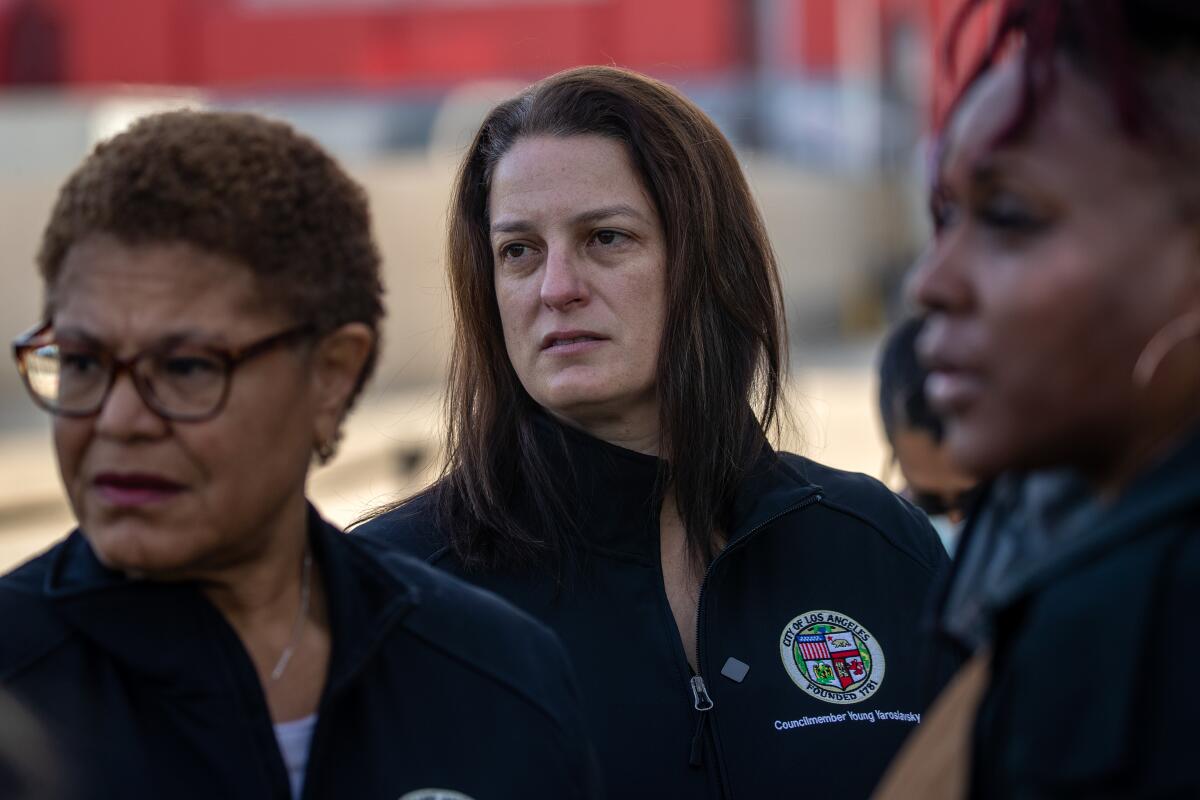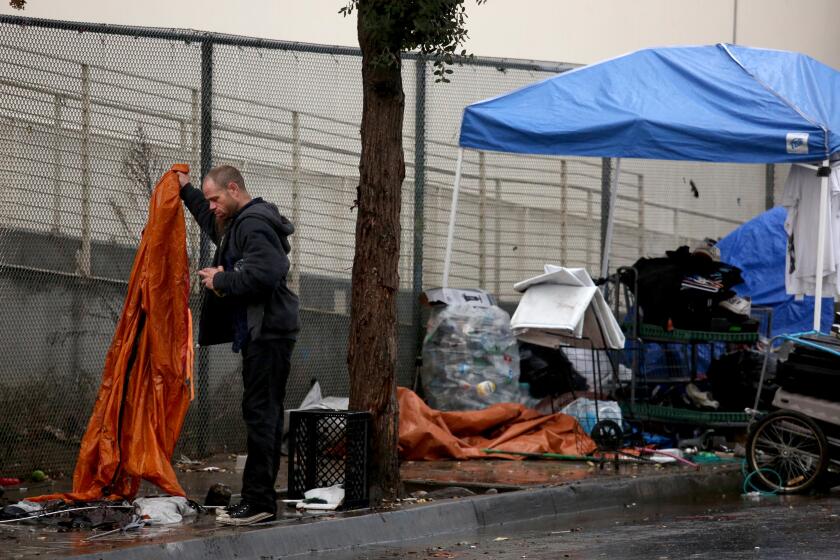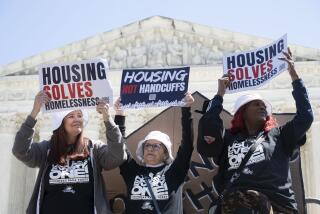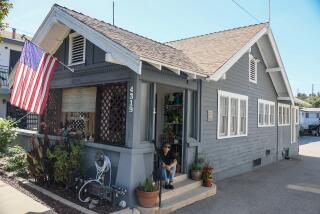Editorial: Homeless people need housing everywhere. Including down the street from your house

When Los Angeles City Councilmember Katy Yaroslavsky proposed building temporary housing for 33 homeless people on a city-owned parking lot at the end of a residential block in her Westside district, the neighborhood erupted in fury.
Residents put up lawn signs denouncing the project, which is at the corner of Midvale Avenue and Pico Boulevard. Opponents created a website, warning that homeless people would inundate the area. At a meeting, people in the crowd booed Yaroslavsky, scoffed at her arguments for the project, and chanted, âRecall! Recall!â One person yelled, âPut them in your house, Katy!â The fact that Mayor Karen Bass was by her side, supporting her and the project, did not stem the outcry.
Even Eric Eisenberg, the former president of the cityâs Transportation Commission â ousted by Bass after he delayed a vote on the project â later warned ominously that if one child were harmed or one home robbed as a result, âthat blood is on CD 5âs hands.â
No question about it, this is an unpopular project.
Venice Dell will provide much-needed homeless and affordable housing. So why isnât Mayor Karen Bass championing this project, instead of allowing more delays?
But there is also no doubt that Yaroslavsky made a creative and courageous decision to propose it. A week ago the Los Angeles City Council unanimously backed her (with one member absent) by approving funding and an exemption from California Environmental Quality Act review for the project.
No district has had more trouble finding temporary housing for homeless people than Yaroslavskyâs. Council District 5 currently has less than a hundred interim beds, and those are open only to seniors, veterans or families. That means there are no places in the district where people between the ages of 18 and 55 â who make up the majority of the homeless population in the area â can go when street encampments are cleared.
The Midvale housing project will offer modular units with bathrooms for 33 people who could bring their pets and their partners. Dining and laundry facilities and service providers will be available on site. The development will be surrounded by landscaping and fencing and have 24-hour security. The area around the site will be a no-camping zone, which means any homeless people camping on the sidewalk can be forced to leave the area.
In a San Francisco case about unhoused peopleâs rights, arguing that judges are stopping cities from trying to fix homelessness doesnât pass the smell test.
âI know that 33 beds doesnât seem like a lot. Itâs because in all honesty itâs not,â Yaroslavsky told her council colleagues. âItâs not nearly enough considering the emergency we are in right now. But it is 33 more than have ever been built in Council District 5 for general population adults and they are absolutely critical.â
Yaroslavsky has done everything she can to appease her opponents â except give in to them.
Yaroslavsky, who was elected in 2022, is discovering what other council members before her found out. Opposition to homeless housing can be swift, noisy and intimidating. When former Councilmember David Ryu proposed an emergency homeless shelter and a permanent housing project on two sites in Sherman Oaks in 2018, he, too, got his head bitten off at a community meeting. Neither project was built for various reasons.
A couple of years ago, Councilmember John Lee tried to claw back city-approved funds for a permanent supportive housing project in Chatsworth that was opposed by neighbors. The council didnât go for that, and the project proceeded. Former Councilmember Mike Bonin, along with then Mayor Eric Garcetti and Police Chief Michel Moore, were lambasted at a Venice town hall in 2018 when they explained why they were setting up interim housing for homeless people at a bus yard in Venice. (The project has had its problems, but it is still there.)
Los Angeles residents say they support housing for homeless people â and are even willing to tax themselves for it â but they always think there is another spot for it better than near wherever they live.
There isnât. Every possible place that can be turned into housing for more than 46,000 unhoused people in the city of Los Angeles should be found and used. There are few if any Goldilocks spots. This is a dense city. What available land is not near a home, school or business? And, no, homeless people cannot be exported to a desert. A recent study on homelessness in California found that 75% of homeless people surveyed are living in the same county where they became homeless.
Kudos to Yaroslavsky for not caving to the pressure. It would have been easier for her office and her political career if sheâd walked away from controversy. She wouldnât have been the first elected leader to do so. But thatâs why Los Angeles has an affordable housing shortage and homelessness crisis. L.A. vests too much land-use authority in individual council members, which puts them under tremendous political pressure to bend to the localized opposition rather than make decisions that serve the broader needs of the city. Ultimately, the city has to fix its land-approval process so no individual council member can make or break a housing project.
More to Read
A cure for the common opinion
Get thought-provoking perspectives with our weekly newsletter.
You may occasionally receive promotional content from the Los Angeles Times.












